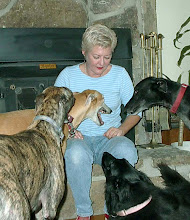Remember, we're still on creating reader identification. Think about this now.
Caste the human quality in terms of what it is from your character’s point
of view. For instance, supposed your character was abandoned by his father
at an early age and even today, as an adult, is seeking his father’s approval.
You and I see that, we know that. But does your character think of it that
way? No, he doesn’t. And he most particularly did not think about it in those
terms when he was thirteen years old. It was a very different issue to him. He
felt anger, perhaps, abandonment – but would he have called it anger or
abandonment? How would it have felt to him? How would it manifest?
Back to this idea of being human: for most thrillers and much other fiction,
your character has also got to be larger than life, capable of those acts of
bravery and heroism that the rest of us just dream about. That doesn’t mean
they can’t be human—in fact, they must be if your reader is to identify with
them. That means they’ve got to have weaknesses and flaws, quirks and
habits just like the rest of us.
Pretty obvious, isn’t it? And most writers do eventually do that. But the thing
is, you’ve got to do it right up front. Not in the first ten pages. On the very
first page.
For more techniques, check out FIRST PAGES at BAMwriters.com
Subscribe to:
Post Comments (Atom)





No comments:
Post a Comment